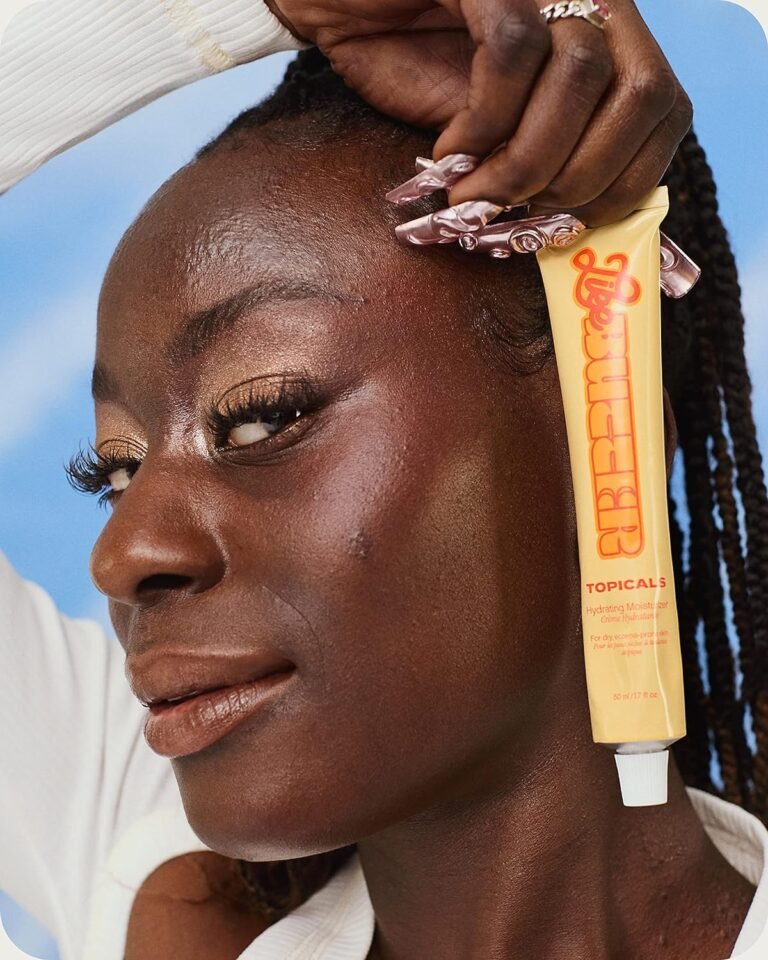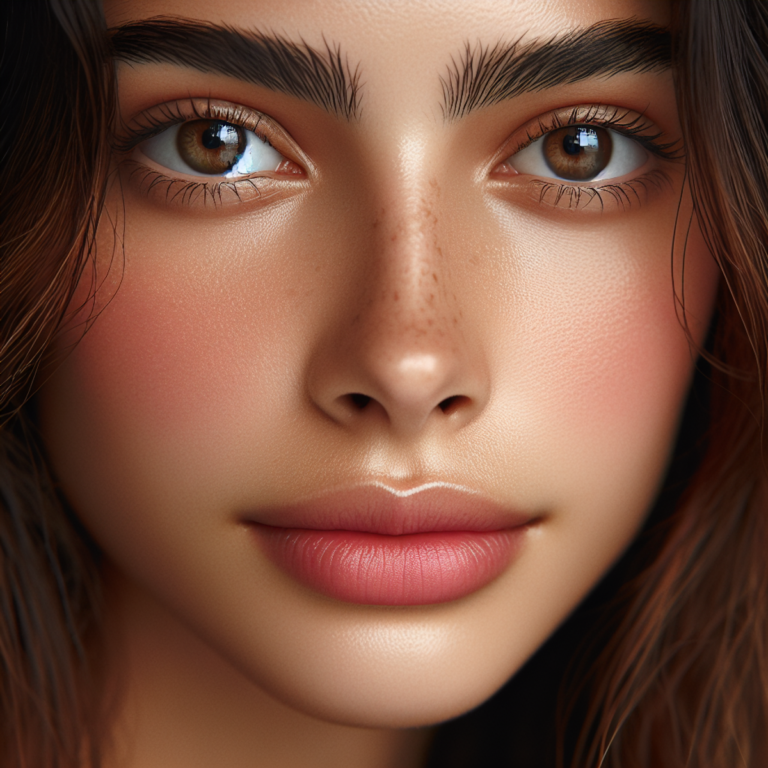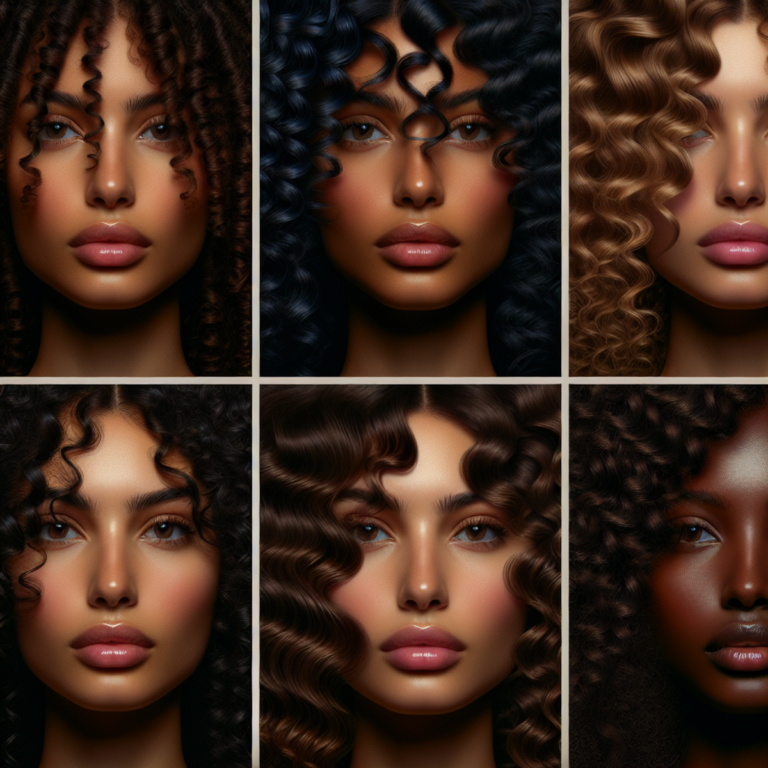Easy and Proven Ways to Get Rid of Pimples Fast

Introduction
Pimples are a common skin issue that can be both frustrating and embarrassing. Whether you have a big event coming up or simply want to feel more confident in your own skin, finding ways to get rid of pimples fast is a top priority. In this article, we will discuss easy and proven methods to help you achieve clear skin quickly and effectively.
It’s important to note that while these methods have been found to be effective for many people, everyone’s skin is unique. What works for one person may not work for another, so it’s essential to listen to your own body and adjust accordingly. Additionally, it’s always a good idea to consult with a dermatologist or skincare professional for personalized advice and guidance.
By combining these at-home solutions with professional advice, you can maximize your chances of getting rid of pimples fast and achieving the clear skin you desire. So let’s dive in and explore these practical solutions that you can start trying today.
Understanding Pimples and Their Causes
Pimples, also known as acne, are a common skin issue that many people face at some point in their lives. They can be quite frustrating and can affect individuals of all ages. In this section, we will delve into the causes of pimples, focusing on the role of clogged pores, dead skin cells, excess oil production, and skin bacteria.
1. Clogged Pores
The formation of pimples begins with the clogging of pores. Our skin has numerous hair follicles that are connected to sebaceous glands. These glands produce sebum, an oily substance that helps keep our skin moisturized. However, when these pores become clogged with dead skin cells and excess oil, it creates an ideal environment for the development of pimples.
2. Dead Skin Cells
Dead skin cells constantly shed from the surface of our skin. When these cells mix with sebum, they can accumulate in the pores and block them. This buildup of dead skin cells prevents sebum from flowing freely and leads to pore congestion.
3. Excess Oil Production
Excessive oiliness is another factor that contributes to pimple formation. Hormonal fluctuations during puberty and menstrual cycles can trigger increased sebum production. This excess oil combines with dead skin cells to form a plug in the pores, trapping dirt and bacteria inside.
4. Skin Bacteria
Specifically, a type of bacteria called Propionibacterium acnes plays a significant role in causing inflammation within blocked pores. This bacterium thrives in the oxygen-deprived environment created by clogged pores and triggers an immune response by our body, leading to redness, swelling, and the formation of pimples.
Understanding these underlying causes is crucial for effectively treating and preventing pimples. By addressing each contributing factor, you can significantly reduce the occurrence of breakouts and achieve clearer skin.
“Pimples are formed when pores become clogged with dead skin cells and excess oil. This clogging creates an ideal environment for the growth of bacteria, leading to inflammation and the formation of pimples.”
“Hormonal fluctuations, excess oil production, and skin bacteria all play a role in pimple development. By understanding these causes, you can take targeted steps to prevent and treat pimples effectively.”
Remember, maintaining proper facial hygiene, managing hormonal fluctuations, and using suitable skincare products can help keep your skin clear and pimple-free. In the next sections, we will explore easy and proven methods to get rid of pimples fast, combining both practical solutions you can try at home and professional advice for best results.
Common Triggers for Pimples
- The influence of hormonal fluctuations, especially during puberty and menstrual cycles, on increased sebum (oil) production and pore congestion.
Hormonal changes play a significant role in the development of pimples, particularly during key life stages such as puberty and menstruation. These fluctuations can lead to an increase in sebum production, causing the pores to become congested and more prone to pimple formation.
During puberty, the body undergoes various hormonal shifts as part of the maturation process. This surge in hormones, particularly androgens like testosterone, stimulates the sebaceous glands to produce more oil. As a result, excess oil can mix with dead skin cells and bacteria within the pores, leading to blockages that may manifest as pimples.
Similarly, menstrual cycles in women are characterized by hormonal changes, specifically fluctuations in estrogen and progesterone levels. These hormonal variations can also contribute to an uptick in sebum production, making the skin more susceptible to developing pimples, especially around the time of menstruation.
The impact of hormonal triggers on pimple development underscores the need for targeted skincare approaches that address oil regulation and pore cleansing. Understanding these influences can empower individuals to adopt proactive measures to manage pimple outbreaks effectively.
By recognizing the connection between hormonal changes and pimple development, individuals can make informed decisions about their skincare routines and seek out treatments tailored to address these specific triggers. This awareness also highlights the importance of considering holistic approaches that encompass lifestyle adjustments alongside topical interventions for comprehensive pimple management.
To further delve into this topic, it’s worth exploring how hormones affect your skin during different phases of your menstrual cycle. Additionally, the NHS provides valuable insights into other causes of acne, which may complement your understanding of pimple triggers beyond hormonal fluctuations.
1. Maintain Proper Facial Hygiene
Maintaining proper facial hygiene is crucial in preventing the buildup of pimple-causing bacteria. The use of a gentle cleanser is essential to avoid irritating the skin and exacerbating inflammation. It’s important to cleanse your face twice daily, in the morning and at night, with a mild cleanser. This routine effectively removes impurities and excess oil without stripping the skin of its natural moisture. By incorporating these practices into your skincare regimen, you can significantly reduce the risk of developing pimples.
2. Ice Application to Reduce Pimple Swelling
Applying ice to pimpled areas can be an effective way to reduce inflammation and swelling. The cold temperature of the ice constricts the blood vessels, which can make the pimple appear less red and prominent.
Here are some key points to keep in mind when using ice on pimples:
- Preparation: Before applying ice, make sure to wash your face with a gentle cleanser and pat it dry. This will help remove any dirt or excess oil from the skin, allowing the ice to work more effectively.
- Wrap the Ice: It’s important not to directly apply ice to your skin as it can cause damage. Instead, wrap a few ice cubes in a clean cloth or plastic baggie. This will provide a barrier between the ice and your skin, preventing any potential harm.
- Application: Gently press the wrapped ice onto the pimple for about 5 minutes at a time. Avoid rubbing or scrubbing the area, as this can further irritate the skin. Take short breaks between each application to allow your skin to rest.
- Frequency: You can repeat this process several times throughout the day, depending on the severity of the pimple and your skin’s tolerance. However, be cautious not to overdo it, as excessive cold exposure can lead to numbness or damage to the skin.
By following these steps, you can safely and effectively use ice to reduce pimple swelling. Remember that while ice can provide temporary relief, it may not completely eliminate the pimple on its own. It’s always best to combine this method with other proven treatments for optimal results.
3. Topical Treatments for Fast Pimple Relief
When it comes to getting rid of pimples fast, topical treatments can be a game-changer. Over-the-counter (OTC) pimple treatments containing ingredients like salicylic acid and benzoyl peroxide are widely available and can effectively unclog pores and kill acne-causing bacteria.
Salicylic Acid
Salicylic acid is a popular ingredient in many acne spot treatments due to its ability to exfoliate the skin and unclog pores. It works by dissolving the dead skin cells that contribute to pore blockage, allowing the trapped oil and bacteria to be released. Look for OTC products with a concentration of 2% salicylic acid for maximum effectiveness.
Benzoyl Peroxide
Benzoyl peroxide is another commonly used ingredient in pimple treatments. It has both antibacterial and anti-inflammatory properties, making it effective in killing acne-causing bacteria while reducing redness and swelling. Benzoyl peroxide works by introducing oxygen into the blocked pores, which helps to kill the bacteria causing the inflammation. OTC products with concentrations of 2.5% to 10% benzoyl peroxide are typically recommended.
Here are some highly regarded OTC products that contain salicylic acid or benzoyl peroxide and are known for their effectiveness against pimples:
- Clean & Clear Persa-Gel 10: This product contains 10% benzoyl peroxide and is specifically formulated for targeting stubborn pimples. Apply a thin layer directly onto the affected area once or twice daily, following the instructions on the packaging.
- Neutrogena Rapid Clear Stubborn Acne Spot Gel: This gel contains 2% salicylic acid and is designed to target stubborn acne spots. Apply a small amount directly onto the pimple up to three times daily, as directed on the packaging.
- La Roche-Posay Effaclar Duo: This product combines 5.5% benzoyl peroxide with lipo-hydroxy acid to target acne blemishes and unclog pores. Apply a thin layer over the affected area once or twice daily, following the instructions provided.
Remember to always read and follow the instructions on the product packaging carefully. It’s important to start with a lower concentration of active ingredients and gradually increase if needed, as higher concentrations can sometimes cause dryness or irritation. Additionally, it’s recommended to do a patch test before using any new product on your face to check for potential adverse reactions.
By incorporating these topical treatments into your skincare routine, you can effectively target and treat pimples, helping them heal faster and reducing their appearance. However, it’s worth noting that everyone’s skin is different, and what works for one person may not work for another. If you’re not seeing improvements or if your acne is severe, it’s always advisable to consult with a dermatologist for personalized advice and treatment options.
4. Using Makeup Strategically to Conceal Pimples
When it comes to dealing with pimples, using makeup strategically can be a game-changer. Not only can it help conceal those pesky blemishes, but it can also provide some additional skincare benefits. Here are some tips and techniques for using makeup to hide pimples without drawing too much attention to them:
Choose the Right Products
- Opt for non-comedogenic and oil-free makeup products that won’t clog your pores or aggravate your pimples. Look for formulations specifically designed for acne-prone skin.
- Consider makeup products that contain skincare ingredients such as salicylic acid. This gentle exfoliating ingredient helps unclog pores and prevent breakouts while providing coverage.
Prep Your Skin
- Before applying makeup, cleanse your face with a gentle cleanser and moisturize your skin. This ensures a smooth canvas for your makeup application and prevents dryness or flakiness.
- Apply a primer formulated for acne-prone skin. It helps create a barrier between your skin and the makeup, allowing it to last longer and minimizing the risk of pore-clogging.
Spot Concealing
- Use a small, flat brush or a clean fingertip to apply a small amount of concealer directly onto the pimple. Pat gently to blend the edges and ensure seamless integration with the surrounding skin.
- Choose a concealer that matches your skin tone or opt for one that has a slight green tint to counteract redness.
Light-handed Application
- When applying foundation or BB cream, use a light hand and build up coverage gradually. Avoid heavy layers of product as it may draw more attention to the pimples.
- Consider using a beauty sponge or brush for an even application, blending the product into the rest of your skin seamlessly.
Set Your Makeup
- To ensure your makeup stays in place and doesn’t slide off throughout the day, set it with a light dusting of translucent powder. This helps to minimize shine and keep your concealer in place.
Remember, while makeup can help camouflage pimples, it’s essential to prioritize skincare and treat the underlying causes of your breakouts. Combine these makeup techniques with a proper skincare routine and other pimple-fighting methods for the best results.
5. Using Face Masks to Treat Pimples
Face masks are great for treating pimples because they deliver powerful ingredients directly to the skin. These ingredients can unclog pores and reduce inflammation, two key factors in pimple treatment. One ingredient that stands out is sulfur, which has anti-inflammatory properties that can calm irritated skin and promote faster healing.
Homemade Face Masks for Pimple Treatment
You can also make your own face masks using natural ingredients that specifically target pimple treatment:
- Honey Mask: Mix raw honey with a few drops of tea tree oil, known for its antibacterial properties, to create a soothing and purifying mask.
- Tea Tree Oil Mask: Dilute tea tree oil with a carrier oil like jojoba or coconut oil and apply it to the affected areas for its antimicrobial and anti-inflammatory benefits.
- Bentonite Clay Mask: Form a paste using bentonite clay and water, then apply it to your skin to draw out impurities and excess oil from clogged pores.
These homemade face masks are a great addition to your skincare routine as they provide gentle yet effective care for your pimpled skin without the harsh chemicals often found in commercial products.
When to Seek Professional Dermatological Treatment
Keywords: cortisone injections
Cortisone injections are a powerful and effective treatment for rapidly reducing severe and stubborn pimples. When over-the-counter and home remedies fail to provide relief for particularly persistent or inflamed pimples, cortisone injections can offer quick and targeted results.
It’s essential to emphasize that cortisone injections should only be administered by a qualified dermatologist. This medical procedure involves injecting a diluted corticosteroid directly into the pimple, which helps to reduce inflammation and promote rapid healing. Attempting to perform this procedure at home or seeking it from unqualified individuals can lead to serious complications and should be strictly avoided.
Other advanced treatment modalities available in a dermatologist’s arsenal, such as oral medications (e.g., antibiotics, retinoids) or light therapy, may also be considered depending on the individual’s condition:
- Oral Medications: Antibiotics and retinoids may be prescribed to target the underlying causes of acne, such as bacterial overgrowth or excessive sebum production. These medications work internally to reduce inflammation and prevent new breakouts from forming.
- Light Therapy: Also known as phototherapy, this non-invasive treatment uses specific wavelengths of light to target acne-causing bacteria and reduce inflammation. It can be particularly beneficial for individuals with moderate to severe acne who have not responded well to traditional therapies.
By seeking professional dermatological treatment when necessary, individuals can access specialized care and interventions that are tailored to their specific skin concerns. Dermatologists can provide personalized recommendations based on an individual’s unique skin type, the severity of their acne, and any underlying factors contributing to their condition.
Lifestyle Adjustments for Long-term Pimple Prevention
1. Adopting a Holistic Approach
It’s crucial to take a comprehensive approach to acne management, addressing both external care and internal well-being. This involves not only treating existing pimples but also preventing future breakouts by considering lifestyle and dietary factors.
2. Pimple-Friendly Diet
A diet rich in antioxidants, such as fruits and vegetables, can help combat inflammation and support skin health. Additionally, incorporating omega-3 fatty acids from sources like fatty fish and chia seeds can contribute to overall skin wellness.
3. Impact of Stress on Acne
Stress can significantly impact hormonal balance, potentially exacerbating pimple development. It’s important to recognize the connection between stress and skin health. Implementing stress-reduction techniques such as mindfulness, meditation, or regular exercise can help manage stress levels and potentially reduce the occurrence of pimples.
By addressing not only the external symptoms but also internal factors that contribute to acne development, individuals can take a proactive stance in managing their skin health for the long term.
Conclusion
Try out the various methods discussed in this article and find what works best for your skin type and condition. Remember, it’s important to experiment and adapt to your individual needs.
It’s crucial to be patient and consistent when treating pimples. Overnight miracles are rare, so it’s essential to stay committed and take a long-term approach to manage and prevent pimples effectively.
If you know someone who is struggling with pimples, share this article with them. By doing so, you can offer them a helping hand in their journey towards clear skin. Let’s spread the knowledge and support others in their quest for healthy, blemish-free skin.










